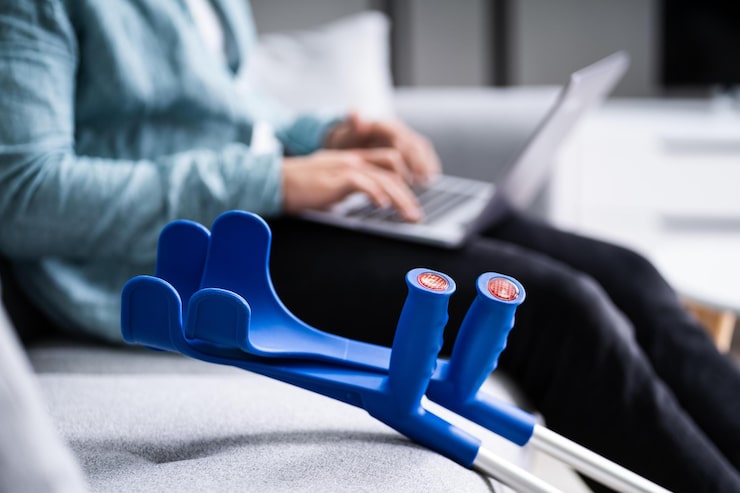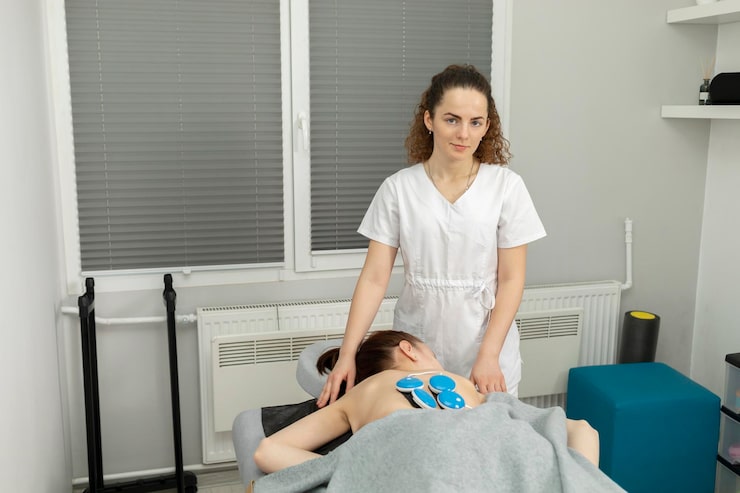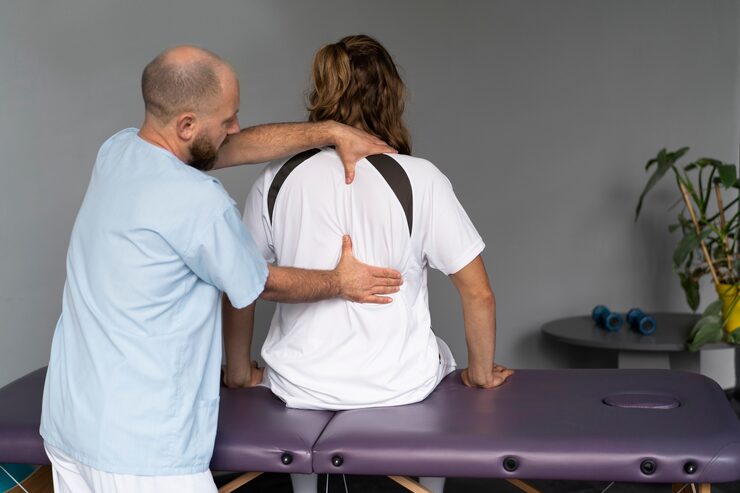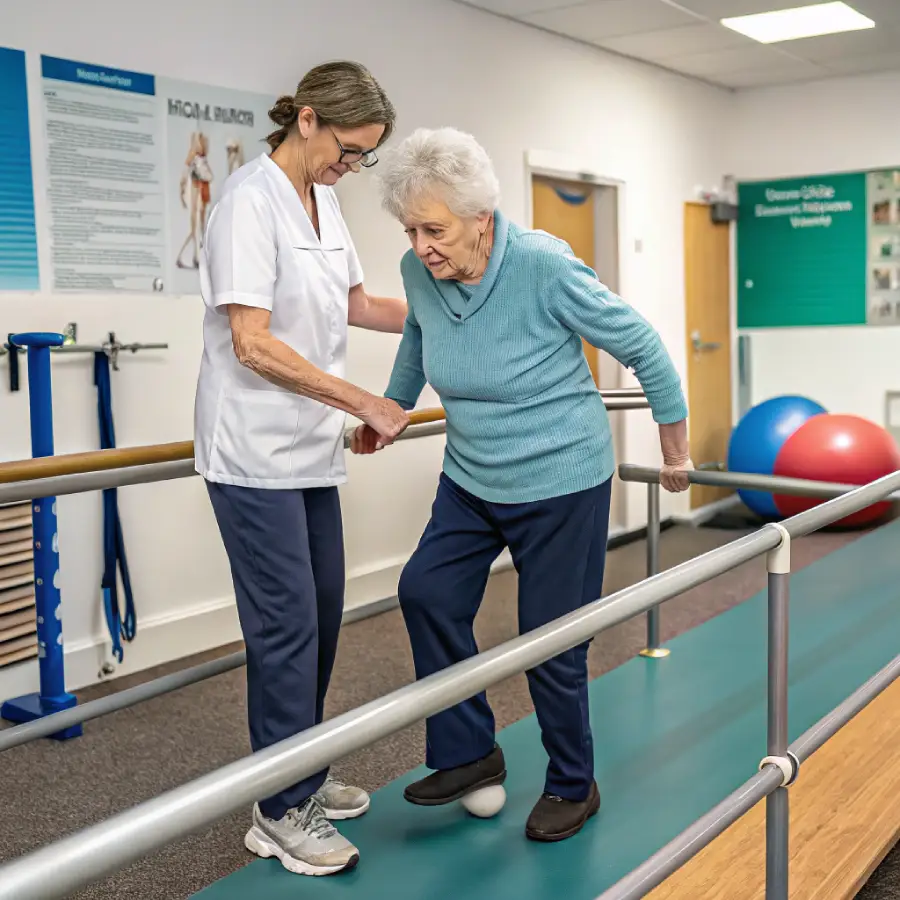Living with a herniated disc can feel like a never-ending battle with pain, stiffness, and frustration. Tasks that were once simple—like tying your shoes or sitting for more than 10 minutes—can become difficult or even unbearable. But here’s some good news: physiotherapy can offer a real solution. It helps relieve pain, improve mobility, and strengthen your body to prevent future flare-ups. In this guide, we’ll cover everything you need to know, including what a herniated disc is, why it happens, how physiotherapy helps, and what you can do to manage your symptoms. Let’s get started!
What is a Herniated Disc?
To understand how physiotherapy helps, it’s important to first know what a herniated disc is. Your spine is made up of bones called vertebrae. Between each of these vertebrae are intervertebral discs, which act as cushions. These discs have a soft, jelly-like center surrounded by a tougher outer layer. They function like shock absorbers for your spine, keeping it flexible and protecting your body from everyday movements like bending, twisting, and lifting. However, when one of these discs is damaged—either from an injury, poor posture, or normal wear and tear—the soft inner material can push out through the outer layer. This is what’s called a herniated disc (also known as a slipped or ruptured disc). When the disc presses on nearby nerves, it can cause pain, numbness, and weakness.
For physiotherapy services in Scarborough, Call us
What Causes a Herniated Disc?
Several factors can contribute to a herniated disc. While some people experience this condition due to an accident or injury, others develop it gradually over time. One common cause is aging and degeneration. Over time, the discs in your spine naturally lose water content, making them less flexible and more prone to injury. This is why older adults are more likely to suffer from herniated discs. Repetitive movements such as bending, twisting, or heavy lifting—especially in jobs that require physical labor—can also increase the risk. Poor posture is another major factor. Sitting or standing with poor alignment for long periods increases the pressure on your spinal discs, eventually causing wear and tear. Sudden trauma, such as from an accident or fall, can cause a disc to rupture. Additionally, some individuals are genetically predisposed to disc problems due to family history.
Symptoms of a Herniated Disc
The symptoms of a herniated disc can vary depending on where the disc is located and how much it is pressing on surrounding nerves. In many cases, people experience sharp or radiating pain. If the herniated disc is in the lower back, this pain may travel down one leg (a condition known as sciatica). If the disc is in the neck, pain may spread to the shoulders and arms. Numbness or tingling is another common symptom, often in the areas affected by the compressed nerves. Some individuals experience muscle weakness, which can make it difficult to perform tasks like lifting objects or walking. In severe cases, a herniated disc can cause loss of bladder or bowel control, which is a medical emergency requiring immediate attention. If you notice these symptoms, it’s important to seek help from a professional.
✔️ Also read: How Soon Can I Start Physiotherapy After an Injury?
How is a Herniated Disc Diagnosed?
Before starting treatment, a healthcare provider—either a doctor or physiotherapist—will perform a thorough evaluation to diagnose the condition. The process often starts with taking a detailed medical history to understand your symptoms, lifestyle, and any past injuries. A physical examination may follow, during which the provider checks your strength, reflexes, and range of motion. They may also assess nerve function by performing simple tests like having you walk on your toes or heels. In cases where the diagnosis is not clear, imaging tests such as an MRI or CT scan may be ordered. These scans provide detailed pictures of your spine, allowing the provider to see the exact location and severity of the herniated disc. Once a diagnosis is made, you and your physiotherapist can develop a tailored plan to address the issue.
How Does Physiotherapy Help a Herniated Disc?
Physiotherapy is one of the most effective non-surgical treatments for a herniated disc. It focuses on addressing both the symptoms and underlying causes of the condition. Unlike medications that only mask the pain, physiotherapy promotes long-term healing by improving strength, flexibility, and posture. Here’s a closer look at the key ways physiotherapy helps.
Pain Relief and Inflammation Reduction
One of the first goals of physiotherapy is to reduce pain and inflammation. This allows you to move more comfortably and safely during rehabilitation. Physiotherapists may use manual therapy, which involves hands-on techniques like soft tissue massage and gentle spinal mobilization to relieve muscle tension and increase circulation. Heat and cold therapy are also commonly used. Heat helps relax tight muscles and improve blood flow, while cold packs reduce swelling and numb pain. Another technique is TENS (Transcutaneous Electrical Nerve Stimulation), which uses small electrical impulses to block pain signals from reaching the brain. These methods provide immediate relief while setting the stage for more active treatment.
Strengthening Core and Supporting Muscles
A weak core is often a contributing factor in herniated disc problems. Your core muscles—including your abdominals, lower back, and pelvic muscles—help stabilize your spine and distribute the load from everyday movements. When these muscles are weak, your spine takes on more strain, increasing the risk of injury. Physiotherapists design personalized exercise programs to strengthen these supporting muscles. Common exercises include pelvic tilts, which engage the deep core muscles, and bridges, which strengthen the glutes and lower back. Planks are another popular exercise, as they build overall core stability. Over time, these exercises reduce the pressure on your herniated disc and help prevent future injuries.
Improving Flexibility and Mobility
If you’ve been avoiding movement due to pain, you may notice stiffness setting in. Physiotherapists address this by prescribing stretches and mobility exercises to restore your range of motion. These exercises help reduce tension in the muscles surrounding the injured disc, improving your ability to move without discomfort. Popular stretches include the cat-cow stretch, which gently moves your spine through its full range, and the knee-to-chest stretch, which relieves lower back tension. Hamstring stretches are also beneficial because tight hamstrings can exacerbate lower back pain. Regular stretching keeps your body flexible and helps prevent further stiffness.
Posture Correction and Safe Movement Techniques
Poor posture is a major contributor to herniated discs, especially for people who spend long hours sitting at desks or performing repetitive tasks. Physiotherapists provide guidance on improving posture and ergonomics to reduce spinal stress. This might include adjusting your workspace setup, such as raising your monitor to eye level and using a supportive chair. Patients also learn safe movement techniques, like bending at the knees instead of the waist when lifting heavy objects. Taking regular breaks to stand and stretch during long periods of sitting is another key strategy. By adopting these habits, you can protect your spine and maintain the progress made during treatment.
✔️ Also read: Is Acupuncture Safe During Pregnancy?
How Long Does Recovery Take?
The recovery timeline for a herniated disc can vary based on factors like the severity of the condition, your age, and your overall health. However, with regular physiotherapy, many patients see significant improvement within four to twelve weeks. Consistency is crucial. Sticking to your physiotherapist’s recommendations for exercises and lifestyle changes will speed up recovery and reduce the risk of re-injury. It’s important to be patient with the process—healing takes time, but steady progress can lead to lasting results.
Tips to Prevent Future Disc Issues
Preventing another herniated disc requires adopting healthy habits that protect your spine. Staying active with regular exercise is one of the best ways to strengthen your muscles and maintain flexibility. Focus on core-strengthening activities and low-impact exercises like swimming or walking. Practicing good posture is also essential. Avoid slouching and ensure that your work and home environments support proper alignment. When lifting heavy objects, always bend your knees and keep your back straight. Additionally, maintaining a healthy weight can reduce the pressure on your spine. These small but consistent changes can significantly lower your risk of future disc problems.
Final Thoughts
A herniated disc doesn’t have to control your life. With the right physiotherapy plan, you can reduce pain, regain mobility, and protect your spine for the future. If you’re experiencing symptoms of a herniated disc, don’t wait—reach out to a physiotherapist today and take the first step toward long-term relief. Physiotherapy offers a safe, effective, and non-invasive solution to get you back on track to living your best life.










